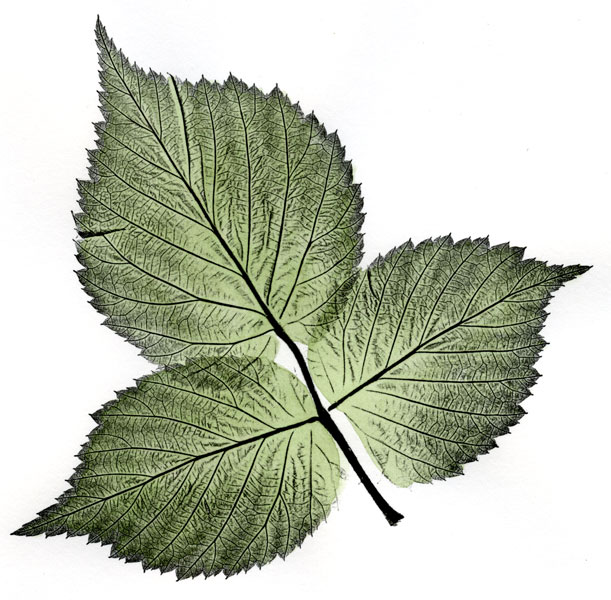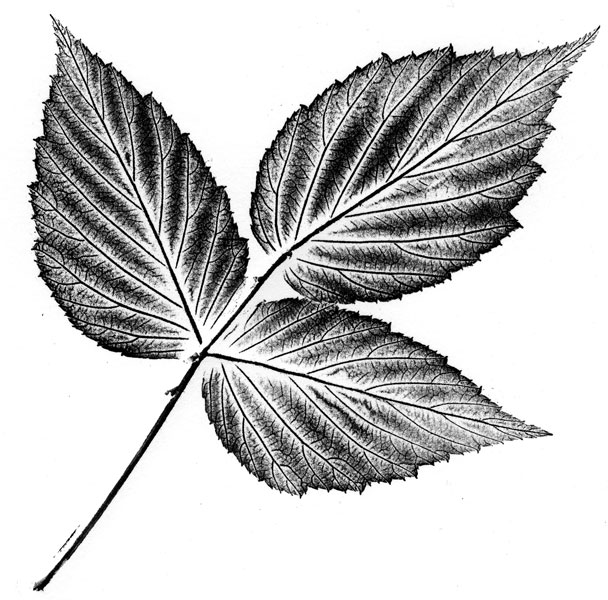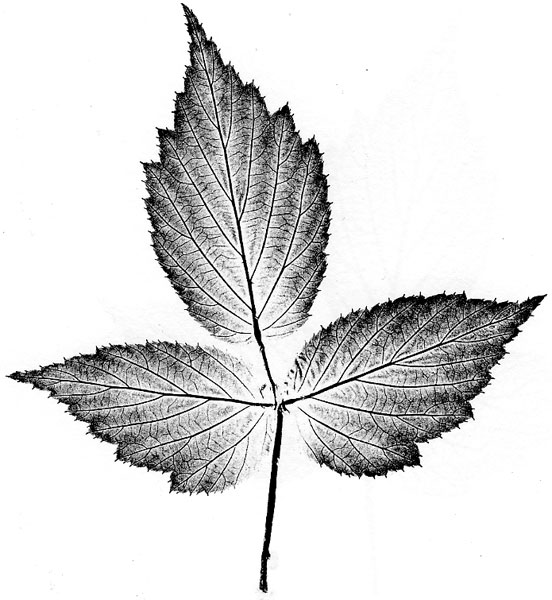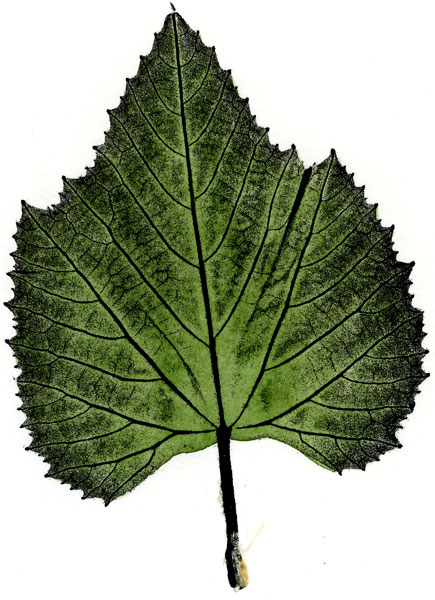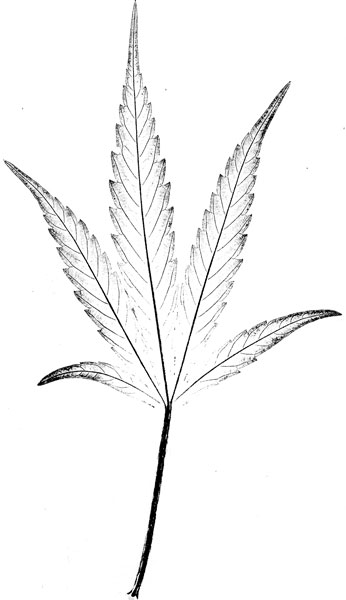Luca Pacioli (1445–1517) was an Italian mathematician, scholar and friend of Leonardo, and wrote several books on mathematics. In his book of magic tricks and mathematical puzzles, De Viribus Quantitatis (On the Powers of Numbers), he gives instructions on how to print from leaves:
To learn how to reproduce single leaves, chiefly those with veins. That is, those which have ribs or veins, such as the leaves of violets, lesser celandine, grapevine, sage, stonecrop, ox-tongue or roses. Take finely ground charcoal, or lampblack which is used to print books, and is much better. Mix it well, adding common oil, then with a sponge or brush spread it on a clean surface in a thick layer. Then take your leaf, well cleaned, put it vein side down on to the inked surface, and put a clean sheet of paper carefully on top of the leaf. Then press the paper with your hand or fingers, but not too hard, as the leaf should not be broken. Once the leaf is coated with black, put it on to another white sheet of paper, taking care it does not move. Then put another sheet of paper over it, and apply some pressure to it: the black impression you want will stay on the paper. It will look very good, but only the outlines will be seen; then with verdigris or some other green water colour paint it carefully and it will look very natural, as you will see.
Pacioli’s instructions are very basic, but with a little modification and the use of polyurethane rollers, results can be achieved that look ‘very natural’ even without colouring. Using commercial oil-based printing ink and the hand roller to roll out an even film, a composite blackberry leaf was laid top side down on the ink. The back of the leaf was inked, using the roller, then lifted from the ink and placed on a sheet of paper, top side down. Another sheet was placed on top, pressure applied using a clean roller, and the images of the top and bottom of the leaf were transferred onto the two sheets of paper. As can be seen from the following prints there is a marked difference between the impression from the top of the leaf and that from the back, or vein side, the latter yielding the most detail. If the paper is dampened and soft blankets or boards are used above and below the ‘sandwich’ a softer impression can be achieved.
It is difficult to prevent the leaves from moving on the paper and blurring the printed image, and a more elaborate method of printing, using a hinged tympan and frisket is used to make these prints. The leaves are fragile and often only one impression is possible from each leaf.
